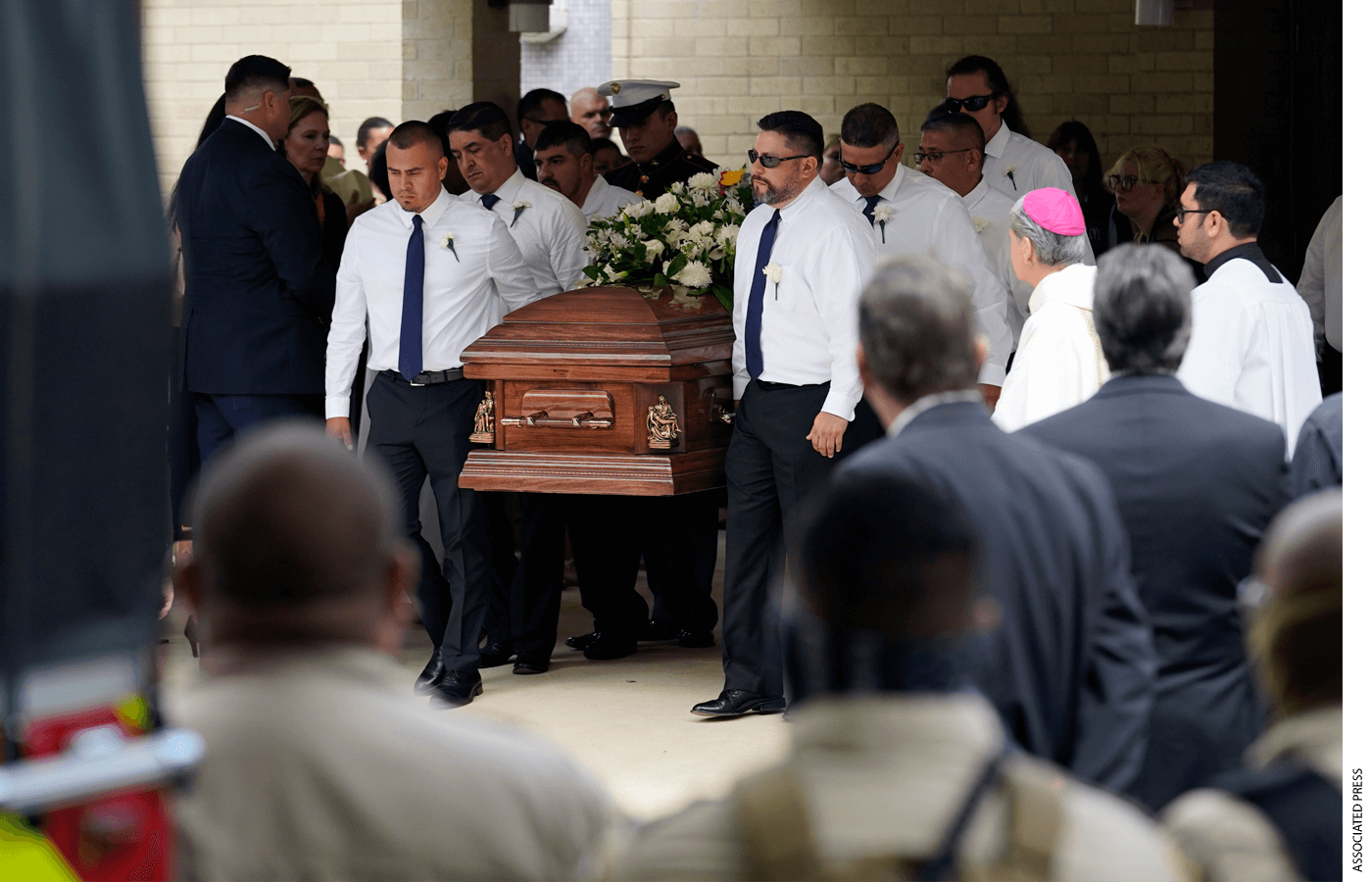
Last week, a gunman killed 19 children and two teachers at Robb Elementary in Uvalde, Texas. It was too horrific for the mind to comprehend, yet unfortunately all too familiar. Tucking in my 8-year-old that night was surreal, as I could only think of all those parents who’d sent their hearts off to school that morning and would never again get to kiss them good night.
This is an instance when the emotion is universally shared. And all of us, parents and educators and politicians alike, are seeking to channel the pain, hurt, and anger into preventing this kind of tragedy from happening yet again. That’s a healthy impulse. Yet, as we’ve seen time and again, it’s tough to agree on effective responses. One option that may hold more promise than trying to broadly restrict guns or secure 100,000 schools is using “red flag” laws to keep potential mass murderers away from deadly weapons.
Now, I’m broadly supportive of gun control. I’m in favor of waiting periods, background checks, and anything else that’s consistent with the Constitution. Hell, I’m open to amending the Constitution to permit more expansive limits. Of course, in this case, as in many similar atrocities, the suspect didn’t have a criminal record, bought legal firearms from a licensed dealer, and would’ve passed a background check. So a check wouldn’t have stopped this tragedy. But it might help next time. I’m also in favor of working to reduce the number of guns floating around out there. It’s just that there are legal difficulties (turns out it’s technically difficult to write laws that distinguish “assault weapons” from other kinds of guns), it’s tough to get huge numbers of guns out of circulation, and the Clinton-era “assault-weapons ban” wound up not having any discernible impact.
There are also those who urge better planning and prevention at the school level. This, too, seems sensible, so long as we appreciate that “hardening” schools is both enormously difficult and risks turning schools into foreboding, unwelcoming places. After all, as NBC News has reported, in recent years, the Uvalde district had doubled its security budget, in line with Texas legislation adopted in 2019 after a 2018 school shooting, which allocated $100 million to districts for this very purpose. NBC reported that Uvalde had instituted “its own police force, threat-assessment teams at each school, a threat-reporting system, social media monitoring software, fences around schools, and a requirement that teachers lock their classroom doors.” Yet, none of this managed to prevent last week’s calamity.
As for preparation, I think we need to pay more attention to the extraordinary downsides of teaching millions of little children that practicing hiding behind desks to avoid being killed is a routine part of their school experience.
What else might we do? Well, rather than focus sweepingly on guns or hardening schools, perhaps we can do more to keep guns out of the hands of the sociopaths who commit these atrocities. This is where red-flag laws come in. Such laws are already on the books in 19 states and the District of Columbia, although they need to be enforced more aggressively. As political commentator David French explained recently, these laws allow police to temporarily confiscate a person’s weapons (and bar them from purchasing any) if a judge deems them a threat to themselves or others.
It turns out there are typically a lot of warning signs before one of these rampages. “The warning signs are [generally] so explicit,” said Adam Lankford, a University of Alabama criminologist and an authority on mass shootings. “Nobody said after the Uvalde shooting, ‘Oh, I spent a lot of time with this guy in the last year and I can’t believe he did this.’ And that’s often the case.” A recent book by Mother Jones reporter Mark Follman similarly notes that these incidents are typically preceded by recognizable warning signs which have been studied and cataloged by threat-assessment specialists.
The 2018 Parkland murderer posted threatening images. Classmates later said that, if there was ever to be a shooting at their school, they’d guess he was the culprit. In fact, my colleague Max Eden wrote a book that made clear just how many times the Parkland killer could’ve and should’ve been flagged. The alleged perpetrator of the recent shootings in Buffalo, N.Y., purportedly told classmates that, after graduating, he wanted to commit a famous murder/suicide. Warning signs were also there in the shootings that happened in El Paso, Texas; Thousand Oaks, Calif.; Pittsburgh; Sutherland Springs, Texas; Charleston, S.C.; Isla Vista, Calif.; Newtown, Conn.; Aurora, Colo.; and Virginia Tech.
And, as Lankford observes, while cartels or gangs may find it easy to get their hands on illegal guns if legal ones aren’t available, the same is not true of these killers. They tend to be loners without criminal ties and so may not be able to get their hands on illegal substitutes. That’s why they buy legal guns or use those already in their homes. Red-flag laws can be used to keep these people from obtaining guns in the first place.
Policy is an inadequate response to tragedy. But if we’re going to try to channel the hurt and pain into something productive, let’s look for an approach that’s most likely to matter next time.
Frederick Hess is director of education policy studies at the American Enterprise Institute and an executive editor of Education Next.
This post originally appeared on Rick Hess Straight Up.


